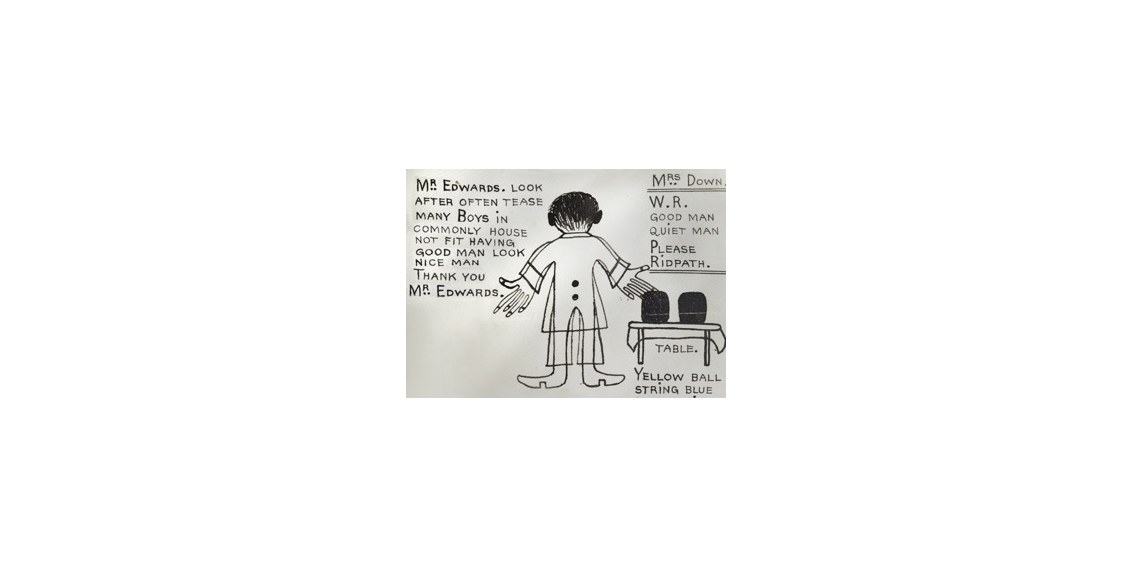Playwright and theatre-maker Julie McNamara has written a guest post for the RCP museum blog as she prepares for the performance of her new work exploring perceptions of disability, 'Hold the hearse!', at the RCP on Monday 13 June 2016.
I’m two weeks into rehearsal with one of the zaniest and most challenging pieces I’ve made in my entire theatre practice. 'Hold the hearse!' is my provocative response to research into the public and hidden collections of some of the partner museums in the project Exceptional & Extraordinary.
I was 11 when I first visited a museum. I was disruptive in class and couldn’t sit still. The teacher gave me a sketchpad and pencils and packed me off to the Lady Lever Art Gallery over the road [in Wirral, near Liverpool]. You can’t send school children off the premises these days but this was the 1970s. I spent the afternoon mesmerised by a statue of Kuan Yin, the goddess of mercy, adored as the embodiment of compassion. There was a violent father attached to her extraordinary story and I was just entranced. Beneath the statue it simply said: ‘She who sits and waits’. So I did.
Since then my work has continued to draw from hidden voices in museum collections and archives just waiting to be heard. 'Crossings' was a story about slavery that weaved three women’s voices across three time zones and continents. It began with a story I found on the walls of Liverpool’s International Slavery Museum and then continued with further snippets from Te Papa [the national museum and art gallery of New Zealand] and the Petone Settlers Museum in Wellington.

I love stories – other people’s, preferably. I can sit in museum spaces for days unearthing the most bizarre human tales hidden in the collections. Perhaps I’m still searching for some semblance of myself, or the possible me I would have become before trauma stole my soul. I still look for representations of the world that I have lived in, which is clearly too far removed from any notion of normality outside of the tiny island that is my family.
In 2011 I became a participant of the RCP’s award-winning exhibition 'Re-framing disability: portraits from the Royal College of Physicians'. It was a genuine privilege to be given access to a myriad of representations of disabled people that were almost obliterated inside the collections we had access to. And in that process we discovered some remarkable humans who were simply lost in the collections because they had so little status in the passing of time. Their non-normative minds and bodies held little value across the ages. Disability, difference – any deviation from the dominant group has always been taboo.
There are huge dilemmas at the heart of museum culture that need addressing if disabled and deaf people are to become central voices amidst the new debates around ethical representations of diversity.
At the beginning of my creative investigations, I asked everybody showing me around their collections – both hidden and on display – two questions:
- What would you crawl on your hands and knees through a fire to save?
- What inside your collection most disturbs you, or are you most afraid will disturb the public?
I was often moved by people's responses, their intensely personal connection with the archived materials. I was also baffled in equal measure by the things that people found disturbing.
The responses to my questions are woven into the heart of the show.

I’ve chosen two stories from the archives at Bethlem Museum of the Mind and Langdon Down Museum of Learning Disability to develop the two characters within the piece. Mad Mary (lunatic, 40 years old, cause of insanity: grief at the loss of a child) and Walter Riddle (feeble minded, mental defect, 17 years old) represent the two groups of people I feel are deeply stigmatised in society because of the impact of previous biomedical research that's informed the society we are today. Ideas that emerged in anatomy laboratories and from biomedical research in the 1800s have had a significant and negative impact on the perception of deaf and disabled people to this very day.

The notion of disabled and deaf people as spectacles for derision, ridicule or pity remains prevalent. The objectifying medical presentations, where people with unruly minds and bodies were paraded before the physicians and surgeons in their operating theatres, were little better than circus freak shows. All helped to educate the public about their place in the hierarchy of classes, races, civilisations and nations that was so crucial to the 19th-century worldview. In 2016 we are fast returning to these very spaces with our disability and capability assessment centres managed by Atos, Capita and Maximus to ensure the survival of the fittest.
Come watch the show and you’ll see where I’m heading.
Julie McNamara, artistic director of Vital Xposure
Book now for Exceptional & Extraordinary at the RCP:
- Monday 13 June 2016: Julie McNamara and David Hevey
- Monday 20 June 2016: Francesca Martinez and Deaf Men Dancing
Read more about our collections on our blog, and follow @RCPmuseum on Twitter and @rcpmuseum on Instagram.
